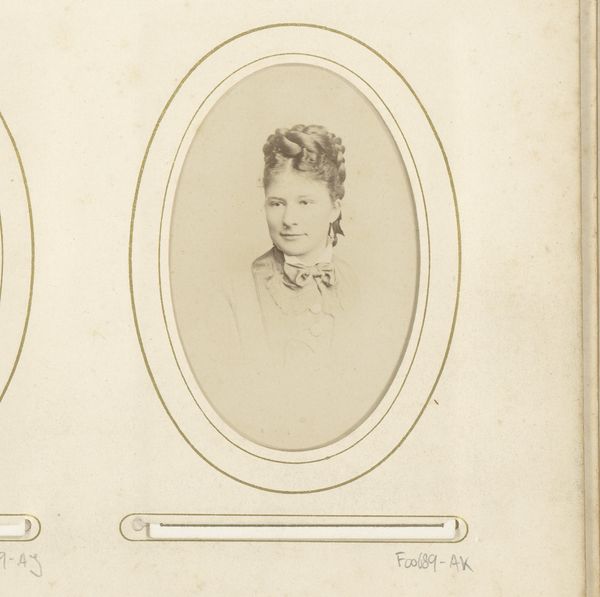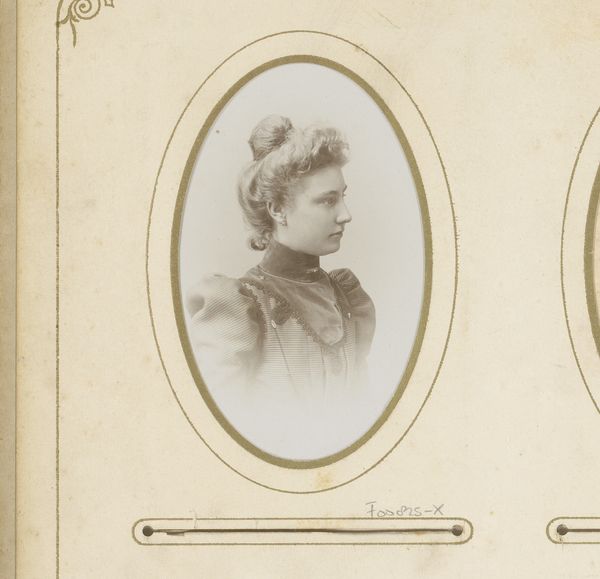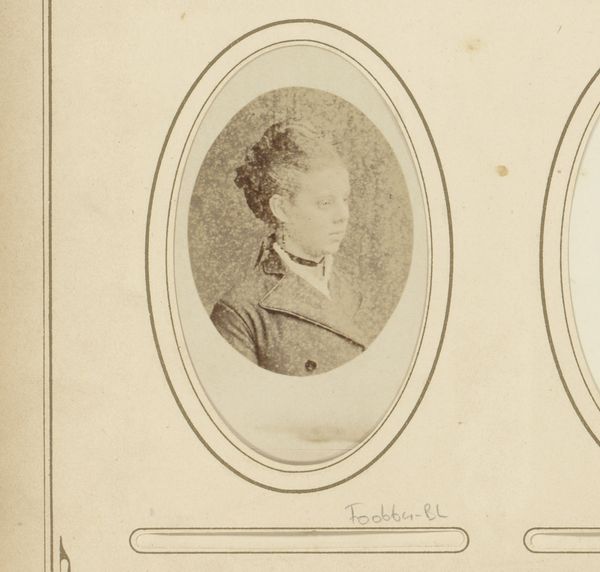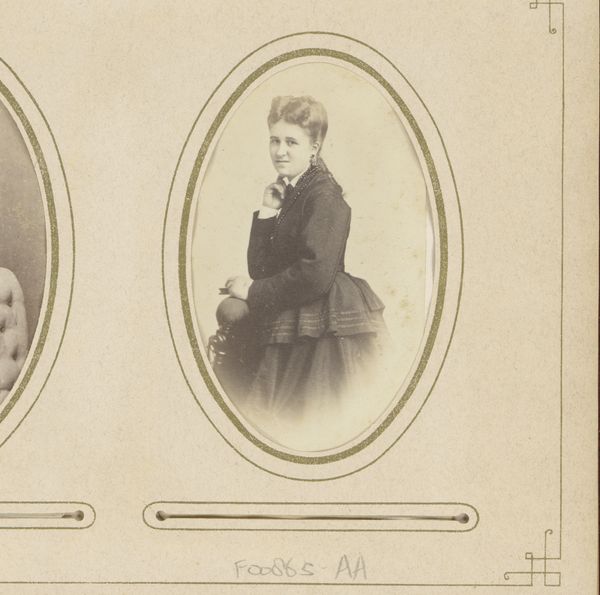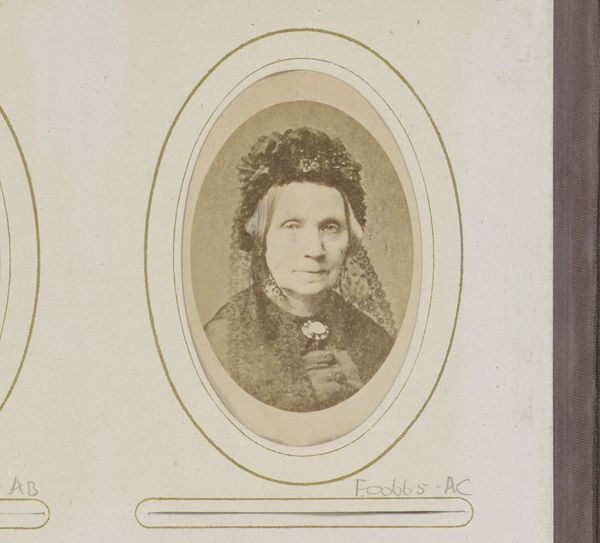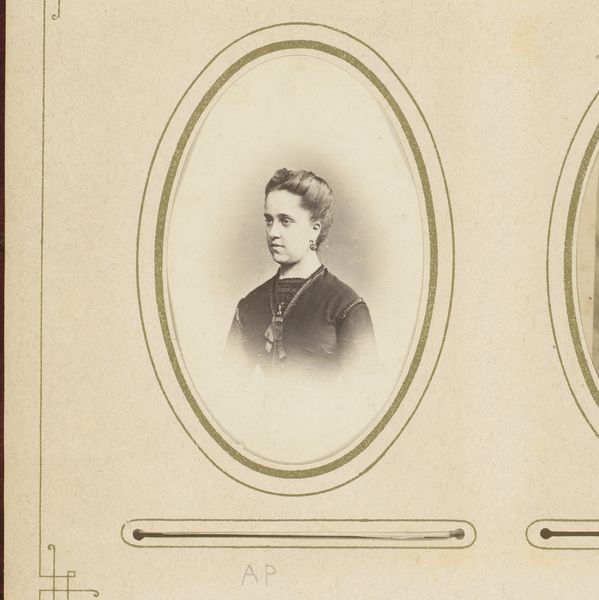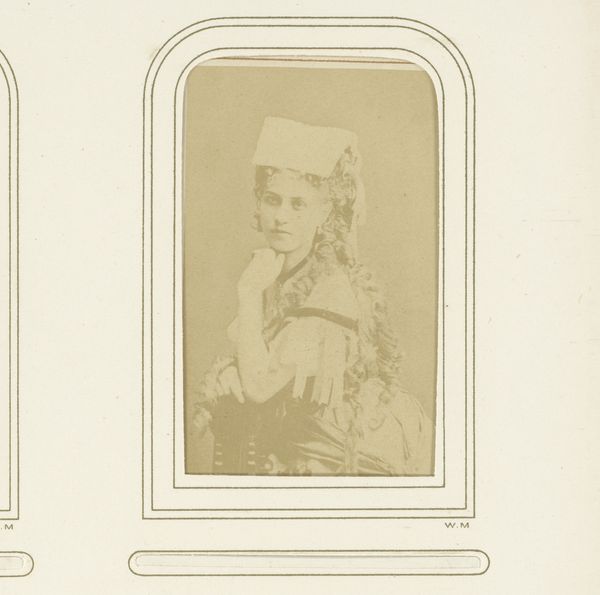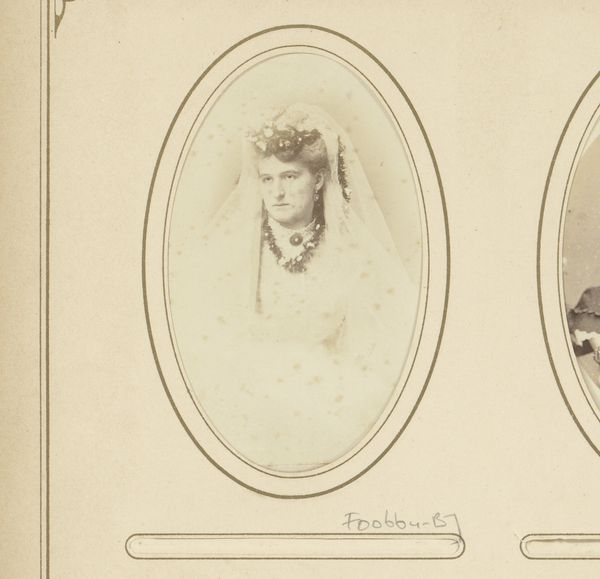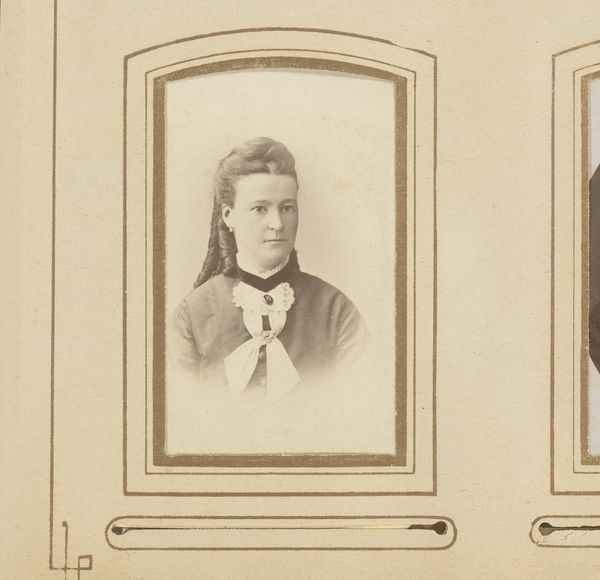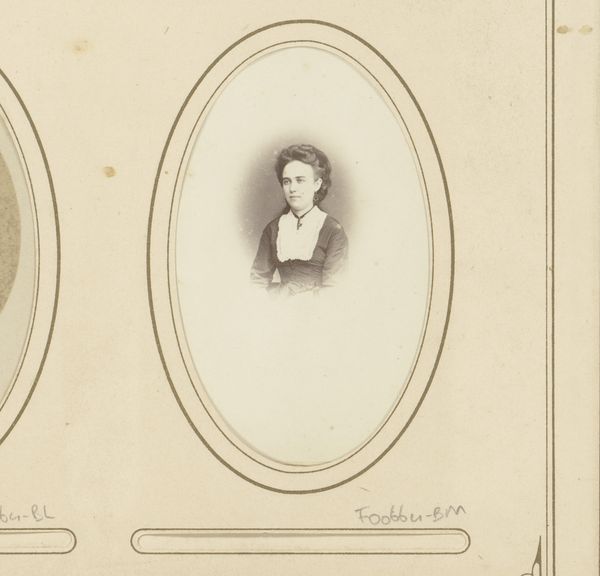
photography, gelatin-silver-print
#
portrait
#
photography
#
gelatin-silver-print
Dimensions: height 81 mm, width 49 mm
Copyright: Rijks Museum: Open Domain
Curator: This portrait, entitled "Portret van Emma, koningin-regentes der Nederlanden," dating from 1870 to 1890, offers a glimpse into the Dutch monarchy through the then-new medium of photography. It's currently held here at the Rijksmuseum. Editor: The gelatin-silver print has an incredible sepia tone, really highlighting the formality of the subject but in a soft, almost melancholy way. The textures feel… contained. It speaks to the burgeoning world of photo production in a material, industrial way, almost standardized. Curator: Absolutely. Think about the context; the late 19th century witnessed the popularization of photography. This portrait, rendered in a then-contemporary technology, aimed to portray Queen Emma in a specific light, influencing public perception and reinforcing her role during a pivotal time in Dutch history. Her race and gender inevitably dictated how she presented and wanted to be seen. Editor: And consider the process itself. The gelatin-silver print, requiring specific chemical treatments, controlled lighting, precise timings. This image is made, constructed as a means to produce a commodity. The flowers adorning her hair aren't just decoration, but also elements contributing to this staged performance. Curator: Yes, flowers symbolize femininity but they may also gesture toward a perceived 'softness' in contrast to masculine power, highlighting how deeply ingrained those constructions were, and maybe still are. But do they also gesture towards ideas of renewal or spring? And is there meaning to be read into where those flowers sit? Editor: Right, it makes you think about all the labor involved in procuring the flowers, constructing the image, and the very act of repetitive production—multiple prints distributed far and wide for consumption. It speaks to this emerging culture of reproducibility and industrial image creation. Curator: Indeed. And how that reproduction reinforced particular ideas of royalty, and gender. By engaging in conversations like this we disrupt fixed meanings around photographic portraits and monarchy to critically question social constructions. Editor: The standardization makes it almost eerily haunting as if countless copies can erase and reinvent the aura of its subject at every consumption. Curator: Understanding this image then isn’t just about Emma but also about thinking critically about the politics behind these depictions. Editor: I’ll leave here today considering both the raw material and political intentions—they are, to your point, not too different!
Comments
No comments
Be the first to comment and join the conversation on the ultimate creative platform.
